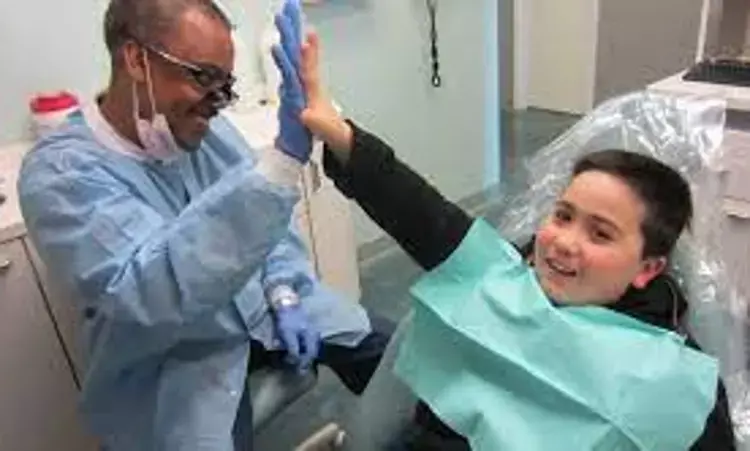- Home
- Medical news & Guidelines
- Anesthesiology
- Cardiology and CTVS
- Critical Care
- Dentistry
- Dermatology
- Diabetes and Endocrinology
- ENT
- Gastroenterology
- Medicine
- Nephrology
- Neurology
- Obstretics-Gynaecology
- Oncology
- Ophthalmology
- Orthopaedics
- Pediatrics-Neonatology
- Psychiatry
- Pulmonology
- Radiology
- Surgery
- Urology
- Laboratory Medicine
- Diet
- Nursing
- Paramedical
- Physiotherapy
- Health news
- Fact Check
- Bone Health Fact Check
- Brain Health Fact Check
- Cancer Related Fact Check
- Child Care Fact Check
- Dental and oral health fact check
- Diabetes and metabolic health fact check
- Diet and Nutrition Fact Check
- Eye and ENT Care Fact Check
- Fitness fact check
- Gut health fact check
- Heart health fact check
- Kidney health fact check
- Medical education fact check
- Men's health fact check
- Respiratory fact check
- Skin and hair care fact check
- Vaccine and Immunization fact check
- Women's health fact check
- AYUSH
- State News
- Andaman and Nicobar Islands
- Andhra Pradesh
- Arunachal Pradesh
- Assam
- Bihar
- Chandigarh
- Chattisgarh
- Dadra and Nagar Haveli
- Daman and Diu
- Delhi
- Goa
- Gujarat
- Haryana
- Himachal Pradesh
- Jammu & Kashmir
- Jharkhand
- Karnataka
- Kerala
- Ladakh
- Lakshadweep
- Madhya Pradesh
- Maharashtra
- Manipur
- Meghalaya
- Mizoram
- Nagaland
- Odisha
- Puducherry
- Punjab
- Rajasthan
- Sikkim
- Tamil Nadu
- Telangana
- Tripura
- Uttar Pradesh
- Uttrakhand
- West Bengal
- Medical Education
- Industry
Paediatric rotary files highly advisable for preparing deciduous root canals

Canal Transportation and Centring Ratio is similar for Paediatric and Regular Files in Primary Teeth. However Paediatric rotary files are highly advisable for preparing deciduous root canals due to their suitable length and adequate cross-section.
The study has been published in the International Dental Journal.
During mechanical preparation of the primary root canal, the original anatomy of the tooth should be preserved and the instrument should be perfectly balanced centrally into the canal space for reducing the probability of canal transportation. The aim of this research was to compare canal transportation and canal centring ability in primary root canals using ProTaper Next (Dentsply Mailfair,), AF baby (Fanta), and Kidzo Elephant (Endostar, Poldent Sp.) files.
Eighteen root canals were randomly divided into 3 experimental groups (n = 6 in each group). Instrumentation was performed using ProTaper Next, Fanta AF baby, and Kidzo Elephant files in groups 1, 2, and 3, respectively. During the instrumentation procedure, the irrigation of 2 mL of 1.5% sodium hypochlorite between each file was done, followed by 5 mL of 17% ethylenediaminetetraacetic acid as a final irrigating solution. Cone-beam computed tomography images were obtained before and after instrumentation. Each group was evaluated for transportation and centring ratios.
Results:
- On comparing all the tested groups within each root canal level canal transportation, the results revealed a statistically nonsignificant difference in the buccolingual direction (P > 0.05).
- Meanwhile, in the mesiodistal direction, group 1 showed a statistically highly significant difference compared to groups 2 and 3 at the cervical level (P < .01).
- However, in both middle and apical root canal levels, there was a statistically nonsignificant difference amongst all groups (P > 0.05).
- Regarding the centring ability comparison of the 3 groups within each root canal level, there was a statistically nonsignificant difference amongst all groups (P > 0.05) in both buccolingual and mesiodistal directions.
The ProTaper Next regular rotary file and the paediatric rotary files showed no difference in canal transportation and centring ability in the buccolingual direction, while in the mesiodistal direction at the cervical root canal level, the ProTaper Next showed high transportation liability.
Reference:
Heba Abdelkafy, Alaa M. Eldehna, Nada A. Salem. Canal Transportation and Centring Ratio of Paediatric vs Regular Files in Primary Teeth. International Dental Journal, 2022, ISSN 0020-6539, https://doi.org/10.1016/j.identj.2022.09.003
Dr. Shravani Dali has completed her BDS from Pravara institute of medical sciences, loni. Following which she extensively worked in the healthcare sector for 2+ years. She has been actively involved in writing blogs in field of health and wellness. Currently she is pursuing her Masters of public health-health administration from Tata institute of social sciences. She can be contacted at editorial@medicaldialogues.in.
Dr Kamal Kant Kohli-MBBS, DTCD- a chest specialist with more than 30 years of practice and a flair for writing clinical articles, Dr Kamal Kant Kohli joined Medical Dialogues as a Chief Editor of Medical News. Besides writing articles, as an editor, he proofreads and verifies all the medical content published on Medical Dialogues including those coming from journals, studies,medical conferences,guidelines etc. Email: drkohli@medicaldialogues.in. Contact no. 011-43720751


